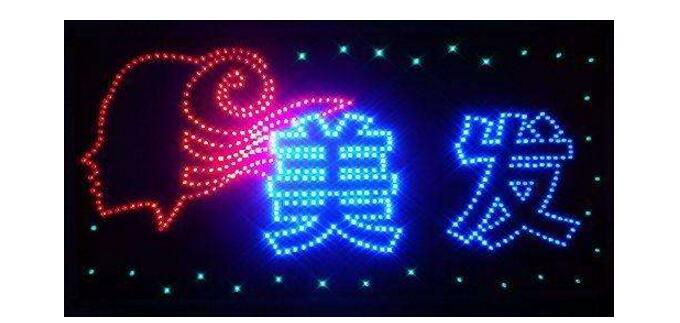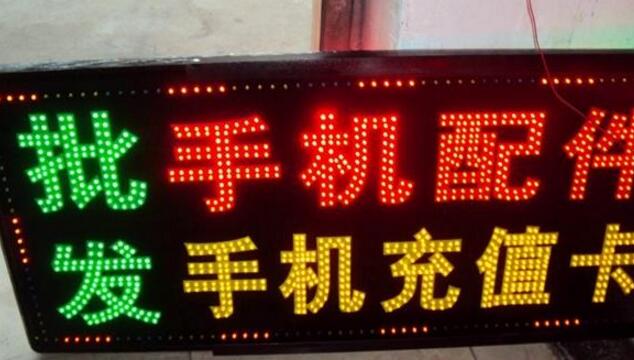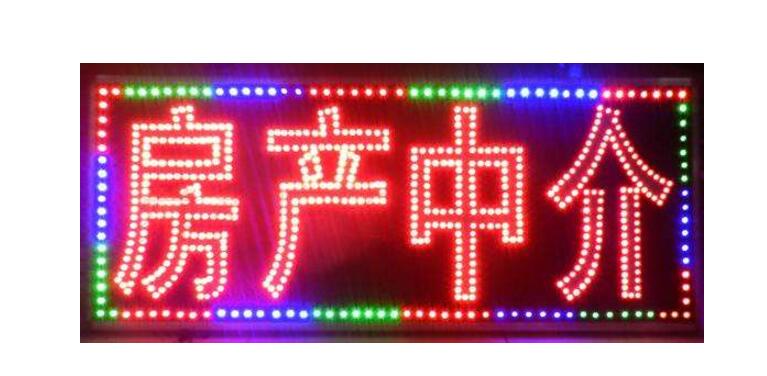**LED Electronic Light Box**
The LED electronic light box is an advanced digital signage solution made from high-brightness light-emitting diodes (LEDs), AOTE electronic light box controllers, aluminum-plastic panels, and aluminum profiles. The manufacturing process begins with graphic design software or specialized lettering tools to create the desired content—whether text or images. Holes are then punched into the aluminum composite panel according to the pre-designed layout. LEDs are inserted into these holes and connected in series. Using DC pulses from the AOTE controller, the LEDs can be programmed to flash, scroll, fade, or display various dynamic effects. This flexibility allows for endless visual creativity, making it highly effective at capturing attention.

**Key Features of LED Electronic Light Boxes**
**Attention-Grabbing Display**
The LED light box continuously flashes and stops, creating a strong visual impact that enhances the effectiveness of advertising. It maximizes the use of available space on the signboard. With the help of modern integrated lighting systems and computer-controlled programming, any size of light box can be customized to display text or patterns in a variety of dynamic ways—such as scrolling, fading, or jumping. This not only increases profitability for manufacturers but also delivers significant economic value to users.
**Energy Efficient and Eco-Friendly**
Compared to traditional neon signs, LED electronic light boxes are more energy-efficient, safer, and have a longer lifespan. They are considered a "green" lighting solution. The LED light source uses super bright LEDs with long life, high luminous efficiency, no radiation, and low power consumption. Their spectrum is almost entirely within the visible range, with a luminous efficiency reaching up to 80–90%, making them a sustainable and environmentally friendly choice.
**Versatile Applications**
LED electronic light boxes are widely used across various industries, including retail, hospitality, healthcare, transportation, and more. They are commonly found in door signs, business introductions, indoor and outdoor signage, exhibition displays, and even in public spaces like airports, train stations, and shopping malls. These light boxes are ideal for entrepreneurs, advertising shops, and small businesses looking to create eye-catching visuals without requiring complex equipment or technical expertise.

**Common Uses of LED Electronic Light Boxes**
1. Wedding photography and home decoration
2. Indoor and outdoor signage
3. Large-scale exhibitions and events
4. Wall decorations in shopping centers, banks, and hotels
5. Advertising in airports, subways, and bus stops
6. Craft gifts and promotional items
7. Mobile billboards

**Common Problems and Solutions for LED Electronic Light Boxes**
**1. How to Insulate the Electronic Light Box?**
Aluminum-plastic panels are commonly used as substrates due to their cost-effectiveness and ease of drilling. However, during production, issues such as electrical leakage may occur. This usually happens when the LED contacts the aluminum panel or when the lamp foot touches another part. To prevent this, ensure proper insulation and avoid over-inserting the lamps into the panel.
**2. How to Wire the Electronic Light Box Controller?**
Wiring the controller is straightforward. Most controllers have a common positive terminal, where all the positive wires are connected. The remaining negative wires are connected to the output lines for different effects, such as running edge, main flash, or constant light.
**3. How to Wire Resistors in the Electronic Light Box?**
Resistors in LED light boxes do not have polarity. They should be connected in series with each LED. For red and yellow LEDs, current should be controlled between 13–15mA, while blue, green, and white LEDs should be limited to 9–12mA. Testing with a light box tester is recommended, and using two or more resistors per LED can reduce failure rates.
**4. Why Do Resistors Heat Up?**
Some heating is normal, but excessive heat indicates a problem. Common causes include insufficient resistance, improper current control, or inadequate power rating. Adjusting the current and using higher-power resistors can help prevent overheating.
**5. Why Is Part of the Light Box Dark?**
Uneven brightness can result from inconsistent current control, too many LEDs in a single string, or low-quality LED beads. Controlling the number of LEDs per circuit and testing with a light box tester can improve performance.
**6. What If the Light Box Is Not Bright or Burns Out Quickly?**
This could be due to unstable voltage, incorrect power supply, or internal short circuits. Always use the correct power adapter and check wiring carefully. If issues persist, consult a professional technician to avoid safety risks.
Multifunction Cutting Machine,Cutting Machine Pipe,Plastic Cutting Machine,Metal Cutting Machine
Kunshan Bolun Automation Equipment Co., Ltd , https://www.bolunmachinery.com